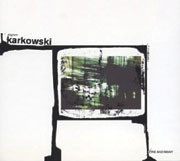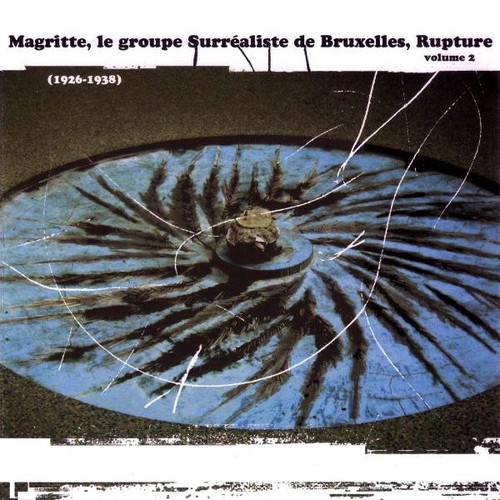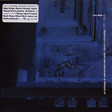★Sub Rosa
Three Overpopulated Cities Built By Shortsighted Planners...
Minimalist sound artist CM Von Hausswolff gives his two cents on the state of overdevelopment in various urban environments the world over in this, his second disc for the Sub Rosa label. It's hard to say precisely how the music here relates to town planning: Von Hausswolff concentrates on conjuring the kind of stark, austere glitch-driven soundscapes found on his work for labels like Raster Noton, using what sounds to be entirely synthetic sources, so again, it's difficult to establish any conc…
Requiem
Produced at the studios of the Groupe de Recherches Musicales and commissioned by the Ina-GRM in Paris (France) and was premiered on March 19, 1973 at the Théâtre Récamier in Paris, in a concert given by the GRM. "The Requiem was composed whilst thinking about the troubled minority of the living, rather than the silent majority of the dead. Also, I tried to turn this oratorio into a "great sonic show," cinemascope music. One can detect the obvious (at least to me) influence of a few filmmakers a…
From Etudes to Cataclysms - for the Doppio Borgato
After the epiphany of An Aural Symbiotic Mystery by Charlemagne Palestine and Tony Conrad (SR204) this is the first solo work by Charlemagne on Sub Rosa - the first but probably not the last - because we would like not only to release some new important material like this one - but re-release too a series of his classic works (most of them, unfortunately, are unavailable). From Etudes to a Cataclysms is one of the most important work 'till this day. An impressive composition of more than 140 min…
An Anthology Of Noise & Electronic Music vol. 5
Sub Rosa presents the fifth volume of the highly-acclaimed and successful Anthology of Noise & Electronic Music series. This installment highlights pieces illustrating a technique (Claude Ballif's "Points, Mouvements"), a country ("Shur, Op. 15" by Alireza Mashayekhi), a studio (Helmut Lachenmann at the IPEM), and historic (François Bernard Mâche's "Prélude"), and radical ("Spectrum Ripper" by Masonna/Yamazaki "Maso" Takushi) works that have ripped apart ancient definitions. All this organized …
Persian Electronic Music: Yesterday and Today 1966-2006
The Sub Rosa label presents the work of Alireza Mashayekhi and Ata Ebtekar/Sote, two essential, key luminaries in the so far very unknown electronic music scene as composed in Iran from the '60s until today. These Iranian music masters work on ancestral structures to create something radically new, travelling around the world as vivid creators, working through the hazards of history. Alireza Mashayekhi (b. 1940) is a pioneer Iranian avant-garde composer whose ideas and works have been performed …
One and many
"These life conditions lead to a radical conclusion: the traditional definitions of music are irrelevant and music theories and music as a cultural concept must be destroyed. That is what we find in his latest works, in which his main concern is to produce pieces out of electronic sounds and acoustic walls on scores developed from the architecture of ruins. His last opus called One and many is the exact development of years of theories and practices. As many of Karkowski's pieces, this is a high…
The mountain swallowing sadness
This is the first album from Wang Changcun, who is a member of the China Sound Unit, a group dedicated to investigating aural phenomena in various urban centers. Blurring the distinction between noise and the avant-garde, it also marks the first release of a Chinese composer by a Western label with international scope.
Of the two tracks on this disc, of more interest is the lengthy opener “Grand Hotel.” In this 40-minute composition, Changcun relies on expansive texture to create an ever-shiftin…
MUSICS IN THE MARGIN
A name totally unknown at its introduction. Where did they fetch it from ? Instantly the floor falls silent when the four mentally retarded musicians, Johan, Linh, Kim and Rudy together with their artistic mentor and drummer boy Damien, all ill at ease, clear their way among drums, trumpets, violins, melodica, samplers and an electric guitar. Concentration, suspense, beads of sweat, a sigh, a cough, and then...'the scream'. For over forty minutes they are pouring a sauce of punk, rock, noise and…
MOROCCAN TRANCE VOL. II : SUFI MUSIC
From the Rif mountains of Morocco, comes the second volume of Moroccan trance music from the Coeur du Monde/Ritual Music and Field Recordings project by Sub Rosa, featuring Sufi music. Recorded on location in Morocco in 1995, the purpose of this series was to record rare and secret ritual music as it happens. The logical continuation is with the more reflective music of the Sufis. Along with the droning sound of the double reed and tebel drum, the recording begins with the very raw Gnaoua of Mar…
Magritte, Le Groupe Surréaliste De Bruxelles, Rupture Volume 2
this second volume aural document is devoted to the Brussels Surrealist Group, 1926, following in the surrealist footsteps that Dada, Pansaers et Correspondance Volume 1 (1917-1926) established. On this compilation you can hear rare documents, including the voice of magritte explaining why it's impossible to answer the questions of journalists. As a nucleus started forming in 1924 around magritte, Nougé, Lecomte, etc., dissension arose, spawning Correspondance (1924-26). This release documents t…
LUNAPARK 0,10
an awesome sound art compilation featuring Guillaume Apollinaire, Antonin Artaud, Julian Beck, Camille Bryen, Augusto de Campos, E.E. Cummings, Marcel Duchamp, François Dufrêne, Pierre Guyotat, Brion Gysin, Richard Huelsenbeck, James Joyce, Ghérasim Luca, Vladimir Maïakovski, Kurt Schwitters, Gertrude Stein, Tristan Tzara.
INUIT
55 Historical Recordings is not exactly “come on and sing along” vocal music. A trace of the collective exuberance heard in much traditional West African vocal and percussive music is here, but isolated in an the individual’s voice. The Inuit occupy one of the harshest, coldest, most desolate regions in the world, the area in and around the Arctic Circle in Siberia, Canada, Greenland and Alaska – the Land of the Midnight Sun.These songs, mostly traditional drum-songs consisting of one vocalist s…
Futurism & Dada Reviewed
Archive aural document collection edited by James Nice and originally released via Sub Rosa in 1989. This unique CD compiles over an hour of original sound recordings made between 1912 and 1959 by luminaries from both 20th Century art movements, including: Marinetti, Antonio Russolo, Jean Cocteau, Marcel Duchamp, Wyndham Lewis, Guillaume Apollinaire, Kurt Schwitters, Tristan Tzara, Marcel Janco and Richard Huelsenbeck. Includes musical and interview material, tone poems, and sleevenotes. Artwork…
An Anthology Of Noise & Electronic Music Vol 4
Sub Rosa presents the fourth volume of the highly-acclaimed and successful Anthology of Noise & Electronic Music series. This installment promises to be the pivoting axis in the seven volume set, with 75% rare tracks and music never before heard. In the previous three anthologies, Sub Rosa outlined the historical sites at the advent of concrete and electronic music: Pierre Schaeffer's workshop studio (Vol. 1), the Princeton Electronic Music Center in Columbia, New York (Vol. 2), and the WDR…
An Anthology Of Noise & Electronic Music - vol 3
this third volume of sub rosa's anthology series continues to showcase all aspects of electronic music from its early beginnings to the present day. here you'll find more than two and a half hours of music, much of which is rare and unpublished, in fact at least 75% of the material. included here are two pieces of historical "musique concrete" from the 70s, several pieces of american tape music and a special focus on the electronic music of germany: wdr early works, krautrock, electronica from t…
An Anthology Of Noise & Electronic Music vol. 2
The story continues with volume 2, featuring slow explorations of the past and the present. Given the present system of production, there are reasons, some of them identifiable, why only a few names emerge in each period. There may also be a preference for concentrating information rather than letting it pile up in disordered fashion. Over the past 40 years, the same ten electronic music composers get mentioned again and again (including in music dictionaries and histories). Yet behind the…
An Anthology Of Noise & Electronic Music - Vol 1
Subtitled: First A-Chronology 1921-2001. At last, the Sub Rosa label re-issues the highly-acclaimed Anthology Of Noise & Electronic Music collection. Containing early and contemporary classics as well as pieces that had never been heard before. Volume 1 begins in the 1920s with the Russolo brothers, and examines each decade in turn -- Varèse, Cage, Schaeffer, Xenakis, the great pioneers crafting the first traces of a music that was markedly revolutionary: electronic music, created from no…
Walls of sound II
'Music in Fifths' (1969) from Phillip Glass. 'Pendulum Music'(1968) from Steve Reich. 'Dorian Reeds' (1964) from Terry Riley. '1 + 1' (1968) from Phillip Glass. 'Reed Phase' (1967) from Steve Reich. 'Walls of Sound' is about what I call: 'static music' - music that isn't semantic, gestured, or narrative, that doesn't move or change atmospherically, and isn't dramatic or has a development in the traditional European sense. If it changes it does it very slowly. The emphasis lies on the 'aural scul…
Aerial # 2
This release is the second (Volume 2) in the three-part Aerial series. Tod Dockstader is one of the all-time great figures in the world of musique concréte composition, with his "organized sound" works from the 1960s being amongst the most radical ever conceived -- in league with Schaeffer, Henry, Stockhausen, and Varese. Aerial is a rare new work in the realm of shortwave radio, from one of America's most experimental composers. Volume 1 was released in March 2005 inside a slipcase. Volu…
Aerial
Tod Dockstader is one of the all-time great figures in the world of musique concréte composition, with his "organized sound" works from the 1960s being amongst the most radical ever conceived -- in league with Schaeffer, Henry, Stockhausen, and Varese. Aerial is a rare new work in the realm of shortwave radio, from one of America's most experimental composers. This release is the first (Volume 1) in a three-part series. "I've written before of my interest in shortwave radio. When I was ve…

















